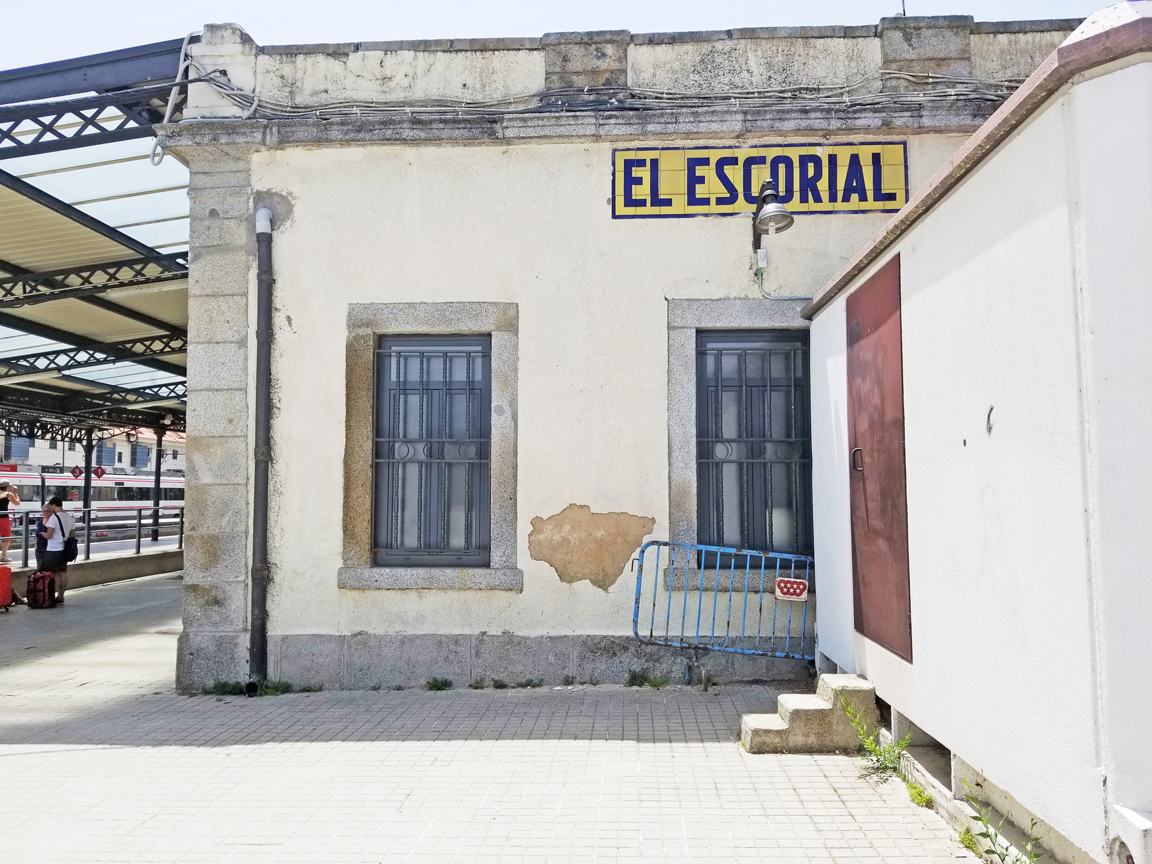El Escorial

Originally, I had planned to leave the Parador in Avila in the morning and spend the afternoon at El Escorial. However, I realized that instead of checking my suitcase in Madrid as I’d planned and only bringing an overnight bag to Salamanca and Avila, I’d brought everything along. Uncertain as to whether or not the El Escorial station had lockers, I decided to head straight back to Madrid, “oversleeping” my stop and arriving at Chamartin without issue.



The following morning, I metro-ed to back to Chamartin and bought a Cercanias ticket, just in the nick of time to catch the commuter train. It took an hour to reach the station for El Escorial. Immediately, I got on the bus waiting outside the station (learn to time your buses like this, Cuenca!) and headed up to San Lorenzo – the palace/monastery/ fortress/etc. Both the landscape and the architecture of the town seemed very French or German as we drove through. It makes sense that a royal residence could make a place feel more Pan-European.

Felipe II chose El Escorial for the site of a palace to inter the remains of his parents, and also to serve as a center of Counter-Reformation education. It was built between 1563 and 1584. The building is allegedly designed after the Temple of Solomon, not-so-subtly equating Carlos I (Charles V) and Felipe II with David and Solomon. It’s also similar to the Alhambra in Granada, and other Byzantine and Arabic structures, its interior punctuated by courtyards.


After the bus dropped us off at the depot, I walked down the long block and up the gravel drive to the palace. Luckily, El Escorial was still pretty empty around noon – I purchased my ticket, sent my bag through the security checkpoint, and walked right in. Again, the site seemed to have a hundred guards, only one of whom is helpful, and minimal or confusing signage. There was so much to see, but a paper map would have been nice. No pictures were allowed inside either, so most of what you'll see below has been pulled from Wikipedia. The first grand room was the Royal Library, with its Sistine-inspired ceiling (but with the arts and science instead of religion), gilded edged books (facing out and numbered), and a cool old globe.



Next up was the Basilica. I peeked in, but Mass was going on, so I skipped walking around. The following set of rooms are the Chapter Rooms, containing the art galleries. El Escorial has a wonderful collection, including El Greco’s El Martirio de San Mauricio. I wrote about it a bit in an earlier post - the painting is completely stunning, especially in person. The gallery also contained loads of Venetian painters – Titian, Tintoretto, and Veronese – and Spanish artists like Navarette, Ribera, Zubaran. There was a great San Sebastian, pre-arrows, attributed to Van Dyck. I sat on a bench in one gallery and listened to the bells from the Basilica ring the hour. It was easy to feel myself transported to another time, between the sound, the decor, and the emptiness of the palace on this Sunday.


*record scratch* *freeze frame* "Yep, that's me. You're probably wondering how I ended up in this situation..."
The next section of El Escorial is the Panteón de Infantes – the marble tombs of the princes. I did sneak a couple of pics here - the rooms were too pretty to resist. The Panteón de Reyes, located below the Basilica, didn’t impress me quite as much – all the kings and queens sepulchers crammed into a smaller, round, gold and brown marble room. I thought it was interesting that the tombs were inscribed with the Latin names instead of the Spanish (Elizabeth/Isabel, Carolus/Carlos/Charles). Online, you can read about preparation for interment in the Pantheon – a royal body has to sit in lime for 50 years before joining the rest of the regents. After the current king’s grandparents are interred, every space will be filled.



The Habsburg palace of Felipe II runs alongside the Basilica, with windows into it where the king could watch mass from his bed when he was suffering from gout. His room is pretty much untouched since his death in 1598. Also nearby is the Hall of Battles, with murals of some of Spain’s most important military victories. Across the way is the Bourbon Palace, which is still decorated in 18th century style, complete with tapestries designed by Goya.






Before exiting, there was a temporary Van der Weyden exhibit, focusing on the restoration of The Crucifixion, which was a nice counterpoint to being awestruck by his Descent from the Cross at the Prado. Finally finished with the palace, I headed out to the garden. Being up in the mountains, it didn’t feel boiling hot at first, but the






I was wearing the right shirt for the occasion, at least.

I got back to the station in time to catch the 2:15 train. I purchased a few amazing sweets from a café, but the El Escorial train station A) had no bathrooms and B) no one manning the desk, so no tickets were being sold, aside from the machine, and there was no track listing. Even the Spaniards were shaking their heads as we tried to find the right track together. (A few policemen finally pointed the way.) I was back to Madrid by mid-afternoon, rounding out the evening with soccer, dinner, and some neighborhood exploration.


Comments
Post a Comment